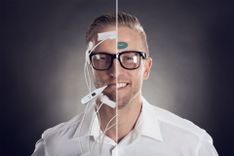IoT in the fight against addiction


Is there anything that you can’t do with IoT technology? In recent years, IoT-based devices have indeed come a long way from being frippery gimmicks - Today, they feature prominently in nearly every aspect of our everyday lives, performing an enormous variety of functions - from tracking blood glucose to monitoring farm operations, there’s literally no stopping them. In this article, we’ll take a look at how the power of IoT technology is being used to combat the dangers of substance use and addiction.
Global rise in drug use
Not all these possibilities are desirable though. For instance, access to contraband substances has never been more universal - It is easier today than ever before in the history of civilization to procure illegal drugs, thanks to the ubiquity of cryptocurrency and the scarily accessible dark web. There is a terrifyingly little in the way of barriers between a bored teenager and seriously dangerous drugs. This, when considered with the fact that we are witnessing previously unseen levels of mental illness and anxiety in the world, probably explains the widespread popularity of substance abuse.
We all know the sheer scope of personal and social injury that substance abuse causes. In addition to gravely undermining the health and wellbeing of individual addicts, they can ravage entire societies, often destroying the economy of entire countries irreparably. If the American opioid epidemic shows us anything at all, it’s that mass incarceration and large-scale legal measures against drug trafficking are probably not the most effective way to counter this threat.
An addicted generation
In 2018, a study published by the National Survey on Drug Use and Health revealed some shocking findings. It claimed that a staggering 19.4% of the US population had used illicit substances at least once in their lives.
It’s not just substances either. The smart folks who study addiction have known for decades that the mechanisms that underlie the human predisposition to get addicted run very deep. Addiction is an adaptive response gone wrong. Humans don’t like monotony, negative emotion, pain, tedium and failure. There is extremely deep-rooted wiring in us that impels us to escape the icky sensations associated with these states. This primal need to escape unpleasantness forms the underlying foundation of all types of addiction.
Thanks to advances in neuroscience and imaging technology, we know today that the neurological mechanisms underlying an unhealthy relationship to food, for instance, or say, a dysfunctional video game dependence, are not that different from that of a methamphetamine addict. That is to say, modern science clearly speaks for a more nuanced picture of addiction, which extends far beyond the realm of narcotics and illicit chemicals.
After all, the human nervous system is one big repository of complex chemicals, each of which performs its own dazzling array of functions.
The Way forward
Governments and policy makers across the world have been forced to sit up and take notice of the alarming rise in the incidence of drug use. Discussing the inner workings of anti-drug policy is far beyond the scope of this article. However, one thing is very clear - it can’t just be up to governments to counter the growing peril of substance abuse. It simply isn’t going to work. A more democratic solution is sorely needed. We need a solution that is more sophisticated in the understanding of addiction that it embodies - Law-enforced anti-drug policy sees addiction as a crime as opposed to the derangement of mental health that we today understand it to be.
Given this situation, it was only going to be a matter of time before the world of technology stepped up to the task and came up with its own take on the matter. Right from the outset, IoT technology brings a lot of heretofore unheard of advantages to the table. The sort of scale at which IoT networks operate can not be matched by any traditional means of treating addiction. What we have been able to achieve with IoT technology in numerous other fields stands as living testimony to the massive untapped potential that lies in the realm of wireless sensors, IoT systems and artificial intelligence.
Today, thanks to revolutionary technologies like energy harvesting and 5G, IoT technology is more accessible than ever. IoT sensors are cheaper than they have ever been, the pandemic notwithstanding. IoT technology has turned many an industry on its head - agriculture, automobiles, aviation and many others. There is nothing inherent in the nature of these industries that makes them particularly ripe for IoT-enabled disruption. If anything, this just goes to show how universally compatible IoT technology is in its power to disrupt and optimise processes. Any process, any human enterprise, is at its core, about information processing. All that we have built today in the name of this global civilisation today, was made possible by finding better and faster ways of collecting and passing on information.
The point we’re trying to make here is that addiction is no different. Yes, the problem of addiction presents unique challenges, but so does every other problem. Nevertheless, at its core, we believe that it is a problem that can be solved by the essentially mythical power that big data, and IoT technology possess. Don’t get us wrong, we ‘re not suggesting that IoT can wipe out the problem of addiction root and stem in one fail swoop. While we understand that addiction is a multifaceted and complex problem that is incredibly hard to solve, the results we’re seeing now can be vastly improved upon by employing the most sophisticated tools at our disposal today - and we think IoT technology represents the cutting-edge when it comes to information processing and connectivity.
Wearables in the fight against addiction
Ok enough abstraction for now. What are some of the real-world applications we see for IoT technology in the global fight against addiction? First off, let’s look at IoT-based wearable technology.
The global wearable technology market is predicted to reach a market cap of $265 billion in a few years. In less than a decade, we have witnessed an enormous growth in the demand for IoT-based consumer electronics. These wearables are aimed at providing various kinds of creative solutions around some commonplace niggles that plague everyday life. Technology enables a whole host of possibilities that weren’t around even a decade ago.
We don’t even have to look too far into the distance - our smartphones have effectively replaced an entire host of gadgets that used to perform various solitary functions. Your smartphone effectively renders cameras, organisers, diaries, post-it notes, alarm clocks etc irrelevant. Moreover, with the right kinds of applications, there is an even longer list of potential functionalities that it can serve in your life.
IoT wearables work much in the same way in the fight against addiction. Addiction, when stripped down to its essence, is a failure of awareness, self-control and perspective. An addict is essentially someone who pursues a certain course of activity repeatedly to the point where it undermines their health, wellbeing and purpose. Addictions essentially undermine our brain’s ability to keep track of what’s going on - they distort our perception of the immediate reality of our life and present a grossly skewed version of it that makes pursuing the object of addiction seem desirable against all evidence to the contrary.
In other words, it’s a failure to process information effectively. If there’s one thing computers have reliably been able to do better than humans over the years, it is effective processing of large volumes of information.
On a conceptual level, this is why IoT devices are so promising in the fight against addiction. So, in this sense, we’re making the point that IoT devices play the role of a neutral, unbiased reservoir of relevant data points. And they do this job well by being autonomous and not requiring much in terms of input from the user.
That’s not all though.
There is also the element of accountability and feedback. They allow you to externalise the component of the system that exercises self-control. This means that instead of relying on your own brain to moderate the things that light it up, you transfer the locus of self-control to a device that can simulate some if not all of what goes into a successful self-control feedback loop.
All that sounds great in theory, but how does it work when it comes down to the brass tacks? The nitty gritty.
One innovative application of this model is the use of game-structured computer modules which is starting to be widely used by practitioners of Cognitive Behavioural Therapy (CBT). This new approach is being used to treat patients that have developed a debilitating heroin addiction. One of the issues that has plagued any attempt to treat powerful addictions like these is that the rehabilitation efforts, no matter how sophisticated they were, were always conducted in the safety of a facility, which was a very poor imitation for the real-world where the patients had to return after the program. This approach aims to rectify that very inadequacy - In this model, therapists use a virtual reality headset to simulate extremely vivid virtual recreations of potential triggers - such as a house party or a bunch of syringes to set off a chain reaction of craving and desire to use in the addicts. Now, the therapists can work with the patients through the middle of an intense craving and help learn effective coping mechanisms. Make no mistake - this is orders of magnitude more powerful than any traditional sledgehammer approach to rewiring an addict’s brain. The same mechanism that causes kids to get addicted to video games is being used here to combat addiction! Neat right?
Habit Tracking and Analytics
As we saw earlier, a lot of the time, addiction is simply a failure of the brain to accurately correlate actions to consequences. A smoker is very likely to grossly underestimate the number of cigarettes he smokes. Or say, someone who is addicted to pornography might simply have an illusory idea of just how often they resort to the habit. The brain simply filters out conflicting information that might make it difficult for the person to carry on with the deleterious habit.
In a lot of cases, simply externalising the record keeping component of the system does the trick. Just seeing how often you're repeating a certain habit is enough to cut back or even quit. While this may not be true with “hard” addictions like opioids or alcoholism, it has been proven to work wonderfully with the many “softer” addictions that the modern human being contends with.
So, how would this work?
Artificial intelligence and IoT can combine in amazing ways to offer users nuanced and detailed analytics about their habits. This finely sourced and precisely tabulated data can be incredibly powerful in kicking annoying habits.
Where does the promise of IoT and AI lie exactly?
So far, the best strategies we seem to have to help addicts are, a. Incarcerate them b. Offer chemical substitutes, which is essentially feeding their addiction further, or, 3. Offer them counseling, rehabilitation and support.
Four the purposes of this article, let’s focus on the third strategy, not the least because it seems to be the only one that is able to show any kind of positive results over a large enough sample size.
So, what’s the problem with that model?
The problem of that model is simply that it involves highly trained professionals using their expertise to try and intervene in what is essentially a subjective problem in the realm of another person’s internal world. Which is not to say that it’s a doomed mission to start with. There are many highly empathetic and extremely competent minds working in the field of addiction and a lot of them have made immense contributions to the lives of addicts around the world. However, such an approach is still limited in scope. It is unfeasible for a therapist to dedicate large amounts of time and attention to a single patient, for obvious reasons. However, the very nature of addiction often demands just that.
This is where the interconnectivity that IoT and AI in tandem promise is pathbreaking. Using IoT and AI together to treat addiction can potentially make for some remarkable results because of the nearly unlimited learning potential that these systems have and also, the incredible amount of personal customisation that they allow for. A one size fits all approach is simply untenable in treating addiction. Every addict is unique. Every addiction is unique. This is where IoT devices when used with smart networks and massive datasets can work wonders where our current approaches fail.
It is simply not possible for a human being or even a team of human beings to pore over the millions, or even billions of variables within an addict’s life, looking for that window of opportunity at which a potential plan for rehabilitation can be directed. This is exactly what an Iot network can do. This is not to say that using IoT networks takes all the randomness and chance out of treating addiction - not at all. Addiction is a deeply subjective experience - while the neurophysiological and biochemical correlates that underlie addiction are widely extrapolatable, the intricate mesh of triggers, personal history and socio-economic variables that underlie an addict’s dysfunctional relationship with his object of addiction is often incredibly unique to that particular individual. Any approach to treating addiction is only going to work to the extent that the person being treated wants to change.
Can you imagine a car that simply refuses to turn on if you are drunk? Sounds a bit too sci-fi? Such a system actually exists! Designed as a means to reduce traffic accidents and the resulting fatalities, a team of researchers have come up with a clever way to use wireless sensor based networks to offer strong reinforcements to drivers who are under the influence.
This is a great example of the massive potential we spoke about earlier. The idea is very simple at its core - sometimes, a nudge or a push is all we need in order to be able to make better decisions. Making decisions of a better quality over a period of time is essentially the opposite of addiction.
In Conclusion
Granted, a lot of what we’re talking about in this article is still in the realm of the abstract and the what if. It may be a bit hard to wrap your heads around. However, make no mistake - these possibilities that we speak about are no fantasy.
While no longer quite in its infancy, it’s hard to argue with the fact that IoT technology has not quite reached its prime. We’re standing at the precipice of a great technological makeover - the true potential of big data, artificial intelligence and wireless sensors will only reveal itself in the years to come.
Being deeply involved in the cutting edge of the IoT universe, our aim here is to share our vision of just how tremendous the scope for ioT technology is. It is in keeping with this aim that we focused on the extremely pertinent topic of addiction, with this post.
To us, it’s not a question of how but when. Interconnectedness and seamless information exchange have formed the cornerstone of every human triumph thus far. As we continue to take bold steps towards a hyper-connected world, the day is not far when we harness the power of this technology to help people who’ve lost their way and stumbled into the dark pit of addiction and substance abuse.













